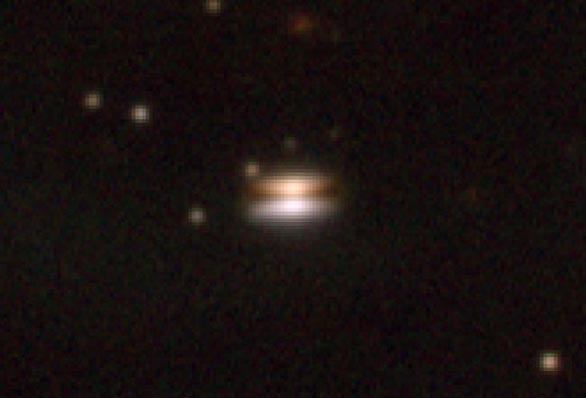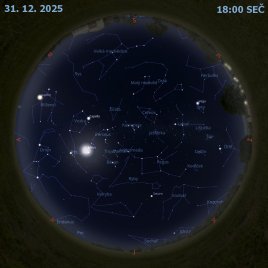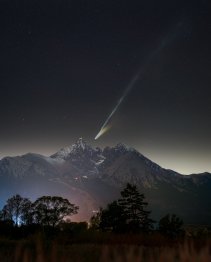Portrét sluneční soustavy v dětství

Uznání: N. Grosso (MPE), et al., European Southern Observatory
U okraje tmavého mračna Rho Ophiuchi, hvězdotvorné oblasti vzdálené 500 světelných let od Země, byla objevena tato osamělá sluneční soustava ve svém dětství. Na tomto infračerveném snímku ve falešných barvách z dalekohledu Evropské jižní observatoře Antu leží z profilu zvětšený, tmavý prachový disk planetotvorného materiálu a přesně rozděluje dvě malé mlhoviny, které odrážejí světlo z ukryté, mladistvé centrální hvězdy. Cirkumstelární disk přezdívaný "Létající podšálek" má napříč asi 300 astronomických jednotek (1 aj - a.u. je rovna vzdálenosti Země - Slunce) nebo pětinásobek průměru dráhy Neptuna. Dvojitá reflekční mlhovina má zřetelně jiné barvy a to z důvodů, které zůstávají záhadou. Zato ale poměrně isolované okolí rodící se sluneční soustavy je šťastnou okolností. V prašném disku by se bez destruktivního vlivu záření a větrů z hmotných hvězd v okolí, které se obyčejně v mladých hvězdokupách najdou, mohly vyvinout planety.
NASA Official: Phillip Newman Specific rights apply. NASA Web Privacy Policy and Important Notices
A service of: ASD at NASA / GSFC & Michigan Tech. U.
Odkaz na originální APOD


